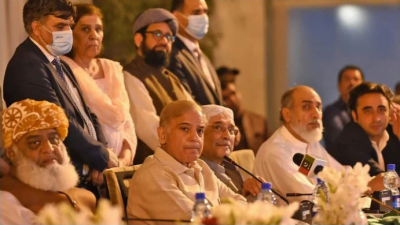Rizwan Nazir
In a turn of events that defied most predictions, President-elect Donald Trump has emerged victorious against Vice President Kamala Harris in the 2024 US Presidential Election. This unexpected outcome, one of the most remarkable comebacks in recent American political history, has left observers intrigued by the breadth of Trump’s appeal in what were once considered crucial swing states.
Trump has triumphed in several pivotal states, including North Carolina, Georgia, Pennsylvania, and Wisconsin, and is leading in Michigan, Nevada, and Arizona—states that he managed to flip from blue to red. This marks a significant improvement from his performance in the 2020 election, with media outlets like CNN noting that this victory has helped to “narrow the partisan chasms” that have characterized recent elections.
On election day, the United States showcased its electoral process as a well-organized and focused event. Trump’s campaign, characterized by a sharp, issues-based approach, resonated with voters who prioritized economic concerns. In contrast, Harris’s strategy focused more on discrediting Trump rather than presenting her own policy initiatives. The electorate, particularly outside the overwhelmingly Democratic states and metropolitan areas like California and New York, appeared overwhelmingly uninterested in celebrity endorsements or high-profile advocacy, directing their attentions instead to pressing economic issues such as mortgage rates, gas prices, and grocery costs. Trump framed his solutions around these concerns, proposing to increase tariffs while simultaneously suggesting corporate tax cuts aimed at invigorating manufacturing and bolstering domestic energy initiatives. These economic strategies garnered favorable reactions on Wall Street, reflecting a broader optimism in global markets.
However, for Kamala Harris, the campaign proved challenging. For weeks, she struggled to articulate a coherent economic strategy to present to voters. Her focus on tax credits for first-time homebuyers paled in comparison to the comprehensive solutions Trump was offering, and her campaign placed more emphasis on attacking Trump rather than engaging directly with the electorate’s actual concerns. The eventual outcome underscored a critical lesson about the electoral calculus in American politics: the economy remains paramount. Americans’ memories of Trump’s tenure often recalled an era during which they felt economically secure, despite the tumultuous events that characterized his presidency, including ongoing investigations and inflammatory rhetoric.
Many voters, still reeling from the inflationary highs that followed the COVID-19 pandemic—disruptions whose effects lingered heavily on personal finances—perceived Biden’s attempts at recovery as inadequate, with 31% of voters citing the economy as their foremost concern, according to national exit polling from Edison Research. Trump’s ability to capture this demographic was striking—he won the votes of 79% of those who prioritized economic issues, while only 20% aligned with Harris’s campaign.
Trump’s support permeated various demographics, securing 50% of suburban votes and 63% of rural ones, while making surprising gains among Hispanic and Black voters as well. As Bill Clinton’s strategist James Carville famously stated, “It’s the economy, stupid,” and this sentiment appears to hold true even today.
Moreover, as election day approached, polling indicated that many voters felt they lacked familiarity with Harris and her platforms on pressing issues. This played into Trump’s hands, as he adeptly engaged disenchanted non-Trump voters and actively sought to bring them into his fold, specifically targeting the LGBTQ community, Hispanic and Black voters, and younger electorates.
Trump’s assertive stance on foreign conflicts also resonated with voters. He confidently claimed that he could bring swift resolutions to international crises like those in Ukraine and Gaza, a powerful contrast to the chaotic geopolitical landscape of the current administration, which had escalated military engagements during Biden’s tenure. Many voters recalled Trump’s initiatives to withdraw troops from Afghanistan and reduce America’s militaristic global footprint—a strategy that Biden inadvertently continued, albeit to disastrous results, as evidenced by the tumultuous U.S. withdrawal that led to significant loss of life.
Harris’s campaign failure to address the concerns of key constituencies—especially in Michigan’s Arab-American communities—proved to be a glaring oversight. With around 200,000 Arab-Americans feeling alienated by Biden’s administration and its foreign policy, Harris marginalized a critical voter base. Her late attempts to address these issues came too late and after she notably silenced a Palestinian-American speaker during the Democratic National Convention, further alienating these crucial voters. Deeper connections from her campaign could have reversed the growing discontent, but instead left most feeling voiceless in a time of need.
The backdrop of unrest among student protestors at elite universities regarding the Gaza conflict further complicated the situation. The Biden administration’s perceived failure to protect these voices, many of whom were first-time voters, showcased a disconnect in addressing urgent social issues, angering a youthful electorate that remained energized and dissatisfied.
Ultimately, in battleground states where the electoral tide shifted, the electorate expressed a profound dislike for the status quo that defined the United States at that moment. Concerns related to the economy, immigration, and crime dominated the discourse, reflecting a significant swing in voter sentiment defined by education, income, and age demographics.
In conclusion, Harris’s inability to shift Trump’s stronghold on conservative states and attract undecided voters highlighted the Democratic Party’s ongoing challenges. As the party confronts an existential crisis and seeks to recalibrate its approach, the 2024 election results send a clear message: Voters are yearning for change, and those challenges will demand careful navigation if they hope to regain ground in future elections. America has awoken to a new political landscape, with the dawn of a Trump presidency posing both uncertainties and potential opportunities for national dialogue.

















































